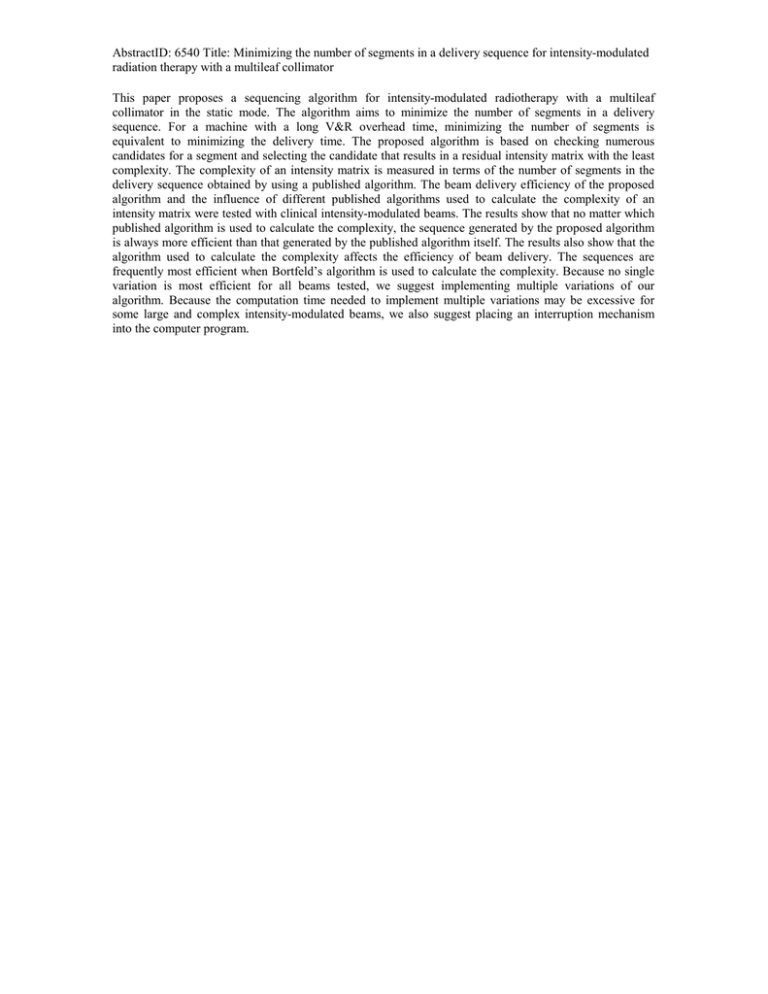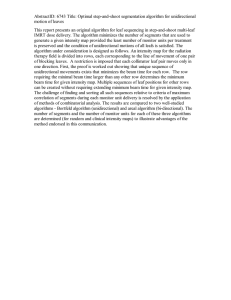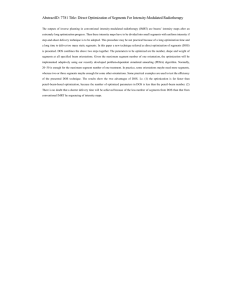Document 14182982
advertisement

AbstractID: 6540 Title: Minimizing the number of segments in a delivery sequence for intensity-modulated radiation therapy with a multileaf collimator This paper proposes a sequencing algorithm for intensity-modulated radiotherapy with a multileaf collimator in the static mode. The algorithm aims to minimize the number of segments in a delivery sequence. For a machine with a long V&R overhead time, minimizing the number of segments is equivalent to minimizing the delivery time. The proposed algorithm is based on checking numerous candidates for a segment and selecting the candidate that results in a residual intensity matrix with the least complexity. The complexity of an intensity matrix is measured in terms of the number of segments in the delivery sequence obtained by using a published algorithm. The beam delivery efficiency of the proposed algorithm and the influence of different published algorithms used to calculate the complexity of an intensity matrix were tested with clinical intensity-modulated beams. The results show that no matter which published algorithm is used to calculate the complexity, the sequence generated by the proposed algorithm is always more efficient than that generated by the published algorithm itself. The results also show that the algorithm used to calculate the complexity affects the efficiency of beam delivery. The sequences are frequently most efficient when Bortfeld’s algorithm is used to calculate the complexity. Because no single variation is most efficient for all beams tested, we suggest implementing multiple variations of our algorithm. Because the computation time needed to implement multiple variations may be excessive for some large and complex intensity-modulated beams, we also suggest placing an interruption mechanism into the computer program.




